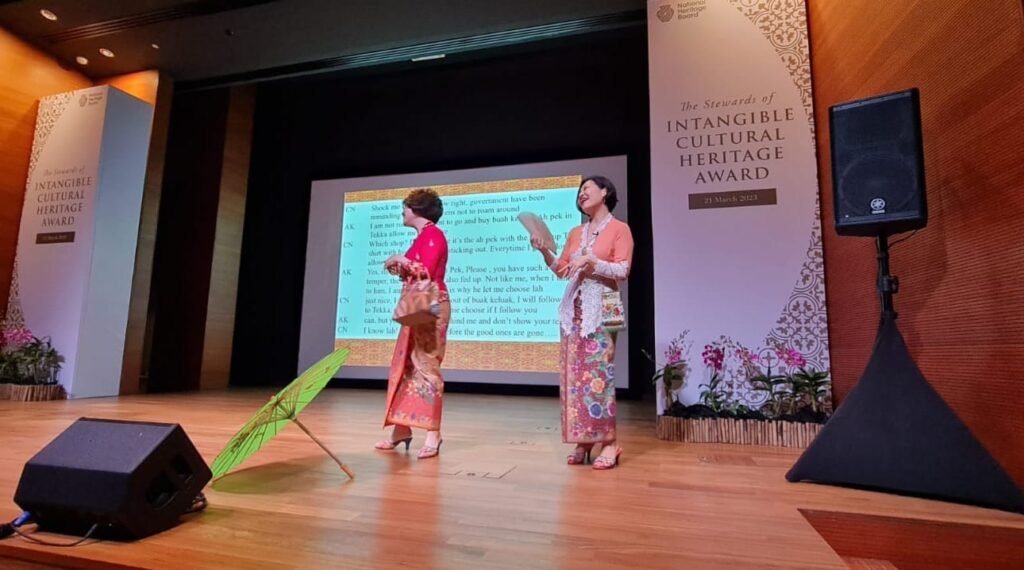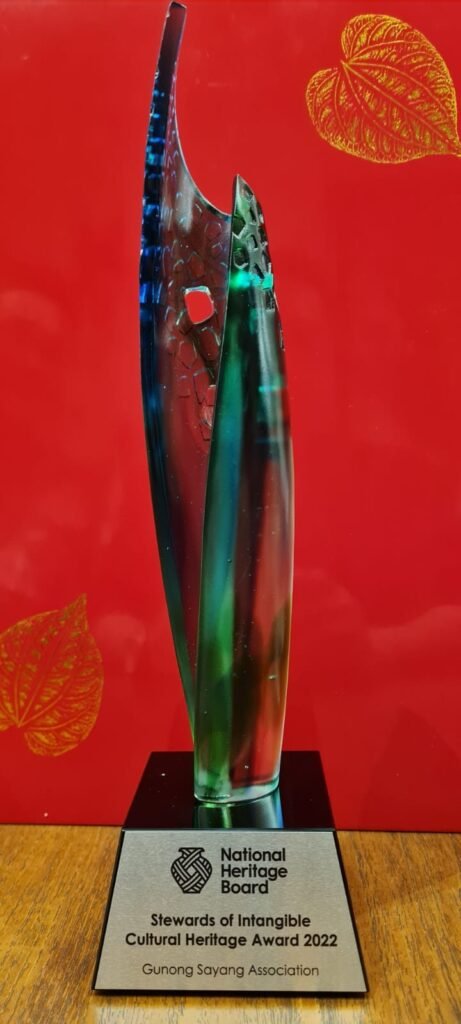04 KOH HOON TECK 許允德 & LIM GUAN NEO 林源娘
The Baba Nyonas – the Peranakans
KOH HOON TECK 許允德 (1878–1956) Place of Ancestry : Hai Deng (海澄)
LIM GUAN NEO 林源娘 (1882 – 1933) Place of Ancestry : Hai Deng (海澄)
Koh Hoon Teck would in today’s Singapore, be a cultural icon, if not a recipient of the Cultural Medallion already. He was a Baba, a person of Chinese descent, but acculturated into the ways of the Malay population. Like many of the peranakans of the day, he spoke among other languages, both English and Baba Malay, a form of Malay similar to the local Malay vernacular. He published and sold books in Baba Malay.
However one of the things he is most remembered for is his music. He was a member of the Cornwall Minstrels, a singing group that comprised Chinese men who loved song and music. But more than that, was his role in the promotion of the art of dondang sayang, a form of extemporaneous poetry between the singers. He was one of the prime movers behind the Persatuan Gunung Sayang or the Gunung Sayang Association, an association dedicated to the performing of the peranakan arts of dondang sayang and wayang peranakan. In fact, the association would meet regularly practising with him.
He had six sons and four daughters but the Second World War was harsh on Koh, and he lost three sons and a son-in-law during the Sook Ching massacre.
For a man who embraced the culture of the Malays, Koh was a man who was also proud of his heritage as a Chinese, and not just any Chinese, but a Han-Chinese. He was born during the era of the Qing emperors, who were Manchus. Koh would take part in a queue-cutting ceremony, where he had his queue cut as a public renunciation of the Qing. He also specified that on his death, he was not to be buried in traditional robes – which would have meant Qing-era style robes, but rather he specified he would be buried in robes of the Ming-era, the last Han-Chinese dynasty, which had been overthrown by the Manchus in the 17th century!
He also had one other specific request about his funeral: that at his funeral, there would be poetry and singing at his burial. And the Gunung Sayang Association obliged, giving a performance to send off one of their cherished founders. Newspapers report that the poem that was read at his burial was as follows:
“Besimila mulai pertama” (Oh from the begining of life )
“Dari Adam mulai Agama” (From Adam born of earth)
“Dunia bugan kita punya” (this world is not ours)
“Asal manusia pulang ketanah (Man returns to his origin)
Koh’s life is a good representation of the conversation of cultures taking place here between the Nusantara, what the Malays call this south-east asian region, and the Nanyang, what the Chinese call this same region. The cultural conversation gave rise to the peranakan culture, and in turn probably accelerated the romanisation of the Malay language because of books published in baba Malay for the peranakan market – those published and sold by Koh.
He may not have been recognised as a cultural icon in his time but in 2023, The Gunung Sayang Association (GSA) which he was so active in, received The Stewarts of Intangible Cultural Award for promoting Peranakan Wayang at a formal ceremony.
by Darren Koh



Recent Comments